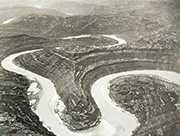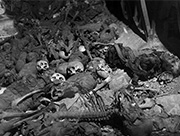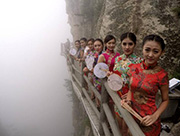

Pema Wanza plays the guitar to relax in Lhasa, capital of southwest China's Tibet Autonomous Region, Aug. 8, 2015. Thangka, music, film. One can never imagine how these seemingly irrelevant elements come together until meeting 21-year-old Pema Wanza. Thangka, a Tibetan scroll-banner depicting various kinds of contents, can be seen in every monastery family shrine in Tibet Autonomous Region and has become a valuable kind of collection in recent years. Wanza started to learn drawing thangka at the age of eleven. After graduated from primary school, he decided to make thangka drawing as his profession and went to a painting workshop to learn it seriously. Fives years later, he finally qualified as a third-level thangka painter, with orders for thangka coming to him after that. Thangka drawing starts with sketching orienting lines on the canvas, then followed by coloring with different pigments mixed with animal glue and ox bile. Painting a small piece of work needs one or two months, while a large work may take about one year. Wanza always spends hours working in front of a piece of painting, and usually sings to relax when he feels tired. He sings well and his third album will be released on the upcoming Xuedun (Fermented Milk) Festival this year. Three years ago, Wanza participated in the live show "Princess Wencheng" as a figurant. He draws thangka in the daytime and performs at night. "My dream is to become a top Thangka artist." said Wanza, "And the happiness in my life is the realization of my dream." (Xinhua/Liu Jinhai)
 |
Day|Week

 China in 1930s through the lens of a German pilot
China in 1930s through the lens of a German pilot Photos of Chinese forced labors working for Japan revealed
Photos of Chinese forced labors working for Japan revealed Striking moments of missile launching
Striking moments of missile launching Beauties give cheongsam show on 2,000-meter-high cliff
Beauties give cheongsam show on 2,000-meter-high cliff The striking moments of Chinese battleship firing
The striking moments of Chinese battleship firing Chinese people go crazy about the swimming champion Ning Zetao
Chinese people go crazy about the swimming champion Ning Zetao PLA type 96A tanks race in "Tank biathlon" in Moscow
PLA type 96A tanks race in "Tank biathlon" in Moscow Final of 2015 Miss Weihai Tourism concludes
Final of 2015 Miss Weihai Tourism concludes